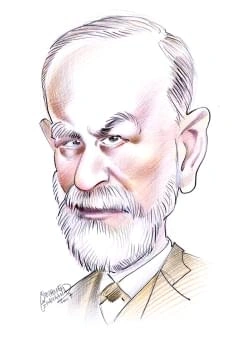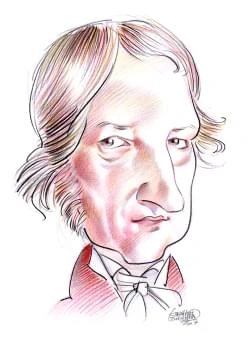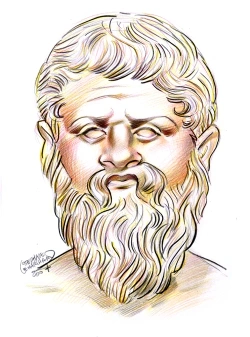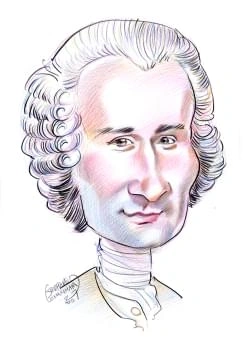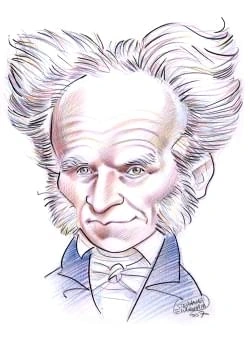9 résultats pour "erg"
-
Dictionnaire en ligne:
ERG(O)-, (ERG-, ERGO-) élément préfixe.
ergologie, substantif féminin. " Science générale du travail et de ses conditions ". Traité d'ethnologie cyclo-culturelle et d'ergologie systématique (Histoire générale des sciences (sous la direction de René Taton) 1957, page 1509) ergomanie, substantif féminin (variante ergasiomanie) " Propension obsessionnelle à travailler ou à s'occuper sans arrêt " (Dictionnaire français de médecine et de biologie (ALEXANDRE MANUILA, LUDMILLA MANUILA, M. NICOLE, H. LAMBERT) tome 1 1970) ergonomie, substanti...
-
Africa - history.
Africa’s other major mountainous regions occur at the northern and southern fringes of the continent. The Atlas Mountains, a system of high ranges, extend for 2,200 km(1,400 mi) across Morocco, Algeria, and Tunisia, roughly parallel to the northern coast. These ranges enclose a number of broad inland basins and plateaus. In the west, theHigh (or Grand) Atlas contains Toubkal (4,165 m/ 13,665 ft), the highest peak of the system. Toward the east, the Atlas consists of two parallel ranges: the Tell...
-
Africa.
The highest elevations in Africa are found in the various ranges of East Africa. After Kilimanjaro, the next highest peaks are Mount Kenya (5,199 m/17,057 ft), north ofKilimanjaro in central Kenya; Margherita Peak (5,109 m/ 16,762 ft) in the Ruwenzori Range on the border between Uganda and the Democratic Republic of the Congo(DRC); Ras Dashen (4,620 m/ 15,157 ft) in the Ethiopian Highlands of northern Ethiopia; Mount Meru (4,565 m/ 14,977 ft), close to Kilimanjaro in Tanzania; and MountElgon (4,...
-
Africa.
The highest elevations in Africa are found in the various ranges of East Africa. After Kilimanjaro, the next highest peaks are Mount Kenya (5,199 m/17,057 ft), north ofKilimanjaro in central Kenya; Margherita Peak (5,109 m/ 16,762 ft) in the Ruwenzori Range on the border between Uganda and the Democratic Republic of the Congo(DRC); Ras Dashen (4,620 m/ 15,157 ft) in the Ethiopian Highlands of northern Ethiopia; Mount Meru (4,565 m/ 14,977 ft), close to Kilimanjaro in Tanzania; and MountElgon (4,...
-
Africa - Geography.
The highest elevations in Africa are found in the various ranges of East Africa. After Kilimanjaro, the next highest peaks are Mount Kenya (5,199 m/17,057 ft), north ofKilimanjaro in central Kenya; Margherita Peak (5,109 m/ 16,762 ft) in the Ruwenzori Range on the border between Uganda and the Democratic Republic of the Congo(DRC); Ras Dashen (4,620 m/ 15,157 ft) in the Ethiopian Highlands of northern Ethiopia; Mount Meru (4,565 m/ 14,977 ft), close to Kilimanjaro in Tanzania; and MountElgon (4,...
-
désert.
Les degrés de l'aridité influencent fortement la végétation. Celle-ci est très diverse. Quasi inexistante dans les grands ergs sahariens, elle est présente sous de multiplesfacettes dans la steppe semi-aride, faite d'hamadas parsemées de graminées, de tapis d'éphémères, ou de plantes qui vivent sur des sols salés dans les chotts. Lesconditions bioclimatiques retentissent sur le modelé et les formes du relief. 4 LES FORMES DE VIE ADAPTÉES AU DÉSERT 4.1 La flore Toutes les régions désertiques, à...
-
désert (faune & Flore).
Les degrés de l'aridité influencent fortement la végétation. Celle-ci est très diverse. Quasi inexistante dans les grands ergs sahariens, elle est présente sous de multiplesfacettes dans la steppe semi-aride, faite d'hamadas parsemées de graminées, de tapis d'éphémères, ou de plantes qui vivent sur des sols salés dans les chotts. Lesconditions bioclimatiques retentissent sur le modelé et les formes du relief. 4 LES FORMES DE VIE ADAPTÉES AU DÉSERT 4.1 La flore Toutes les régions désertiques...
-
Le Sahara et le Sahel
LES TOUAREG • Les Touareg, dont la population est estimée à 1 million d'individus, forment la principale communauté du Sahara. • Vêtus de tissus de couleur bleu indigo qui déteint sur la peau, ils furent aussi appelés les " hommes bleus , par les voyageurs occidentaux. • Eux-mêmes préfèrent se désigner sous les noms d'lmajaghan ou lmuhagh - " noble et libre , -ou de Kel Tamajaq- " les gens de Tamajaq "· • Leur langue est le tamajaq, tamasheq...
-
Le désert exerce une étrange attirance.
de formes d'accumulation (cônes de déjection, terrasses caillouteuses ou limoneuses). Le travail du froid explique, d'autre part, la présence de coulées de blocs ou de cirques glaciaires ; celui du vent, l'existence de vieilles dunes roses et de dépressions fermées. Tous ces modelés sont des héritages des périodes glaciaires et interglaciaires du quaternaire, fidèlement illustrées d'ailleurs par les poissons, les girafes ou les hippopotames gravés sur les rochers par les hommes préhistoriques. S...
}})
